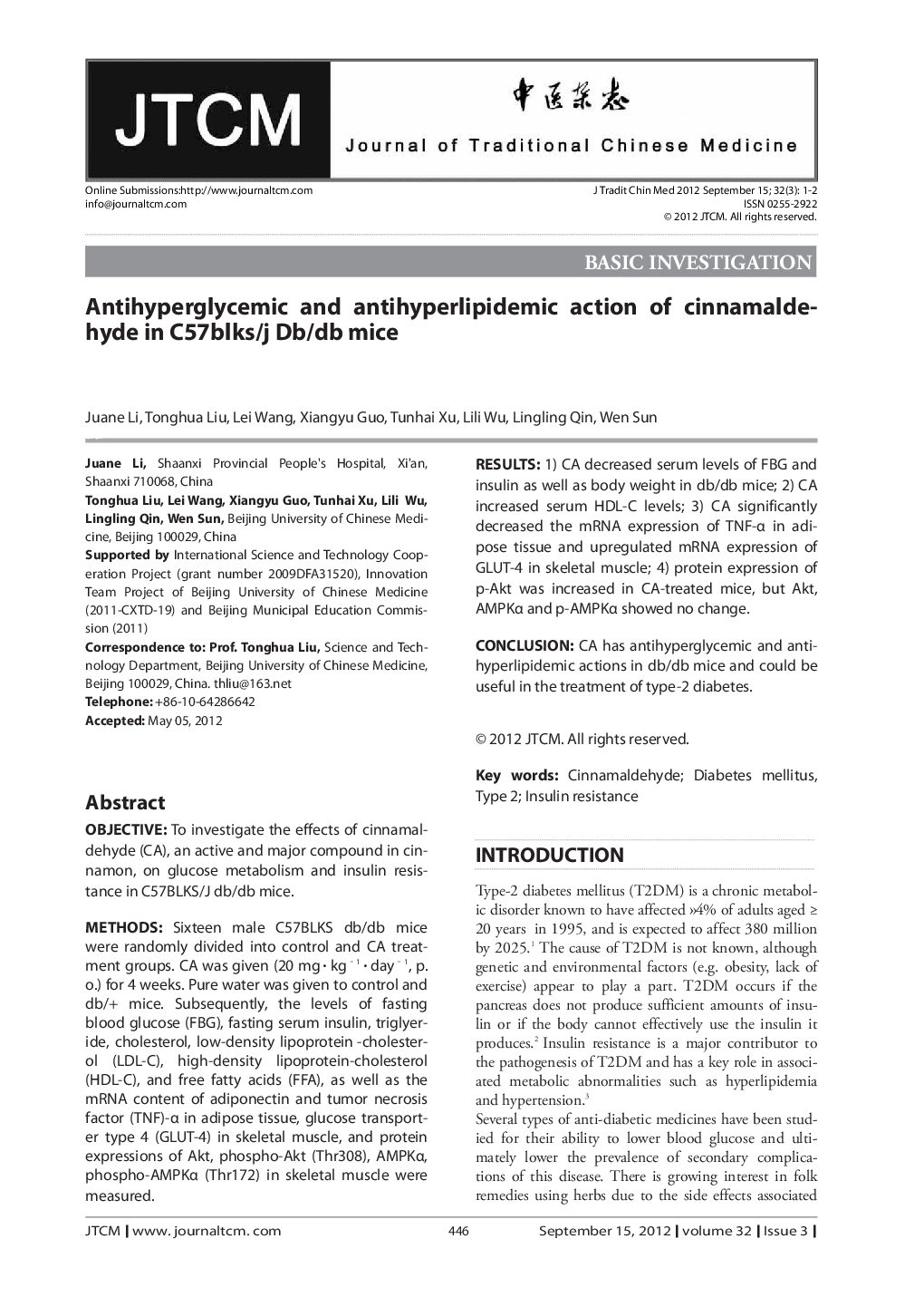| Article ID | Journal | Published Year | Pages | File Type |
|---|---|---|---|---|
| 4200986 | Journal of Traditional Chinese Medicine | 2012 | 7 Pages |
ObjectiveTo investigate the effects of cinnamaldehyde (CA), an active and major compound in cinnamon, on glucose metabolism and insulin resistance in C57BLKS/J db/db mice.MethodsSixteen male C57BLKS db/db mice were randomly divided into control and CA treatment groups. CA was given (20 mg · kg−1 · day−1, p. o.) for 4 weeks. Pure water was given to control and db/+ mice. Subsequently, the levels of fasting blood glucose (FBG), fasting serum insulin, triglyeride, cholesterol, low-density lipoprotein -cholesterol (LDL-C), high-density lipoprotein-cholesterol (HDL-C), and free fatty acids (FFA), as well as the mRNA content of adiponectin and tumor necrosis factor (TNF)-α in adipose tissue, glucose transporter type 4 (GLUT-4) in skeletal muscle, and protein expressions of Akt, phospho-Akt (Thr308), AMPKα, phospho-AMPKα (Thr172) in skeletal muscle were measured.Results1) CA decreased serum levels of FBG and insulin as well as body weight in db/db mice; 2) CA increased serum HDL-C levels; 3) CA significantly decreased the mRNA expression of TNF-α in adipose tissue and upregulated mRNA expression of GLUT-4 in skeletal muscle; 4) protein expression of p-Akt was increased in CA-treated mice, but Akt, AMPKα and p-AMPKα showed no change.ConclusionCA has antihyperglycemic and antihyperlipidemic actions in db/db mice and could be useful in the treatment of type-2 diabetes.
